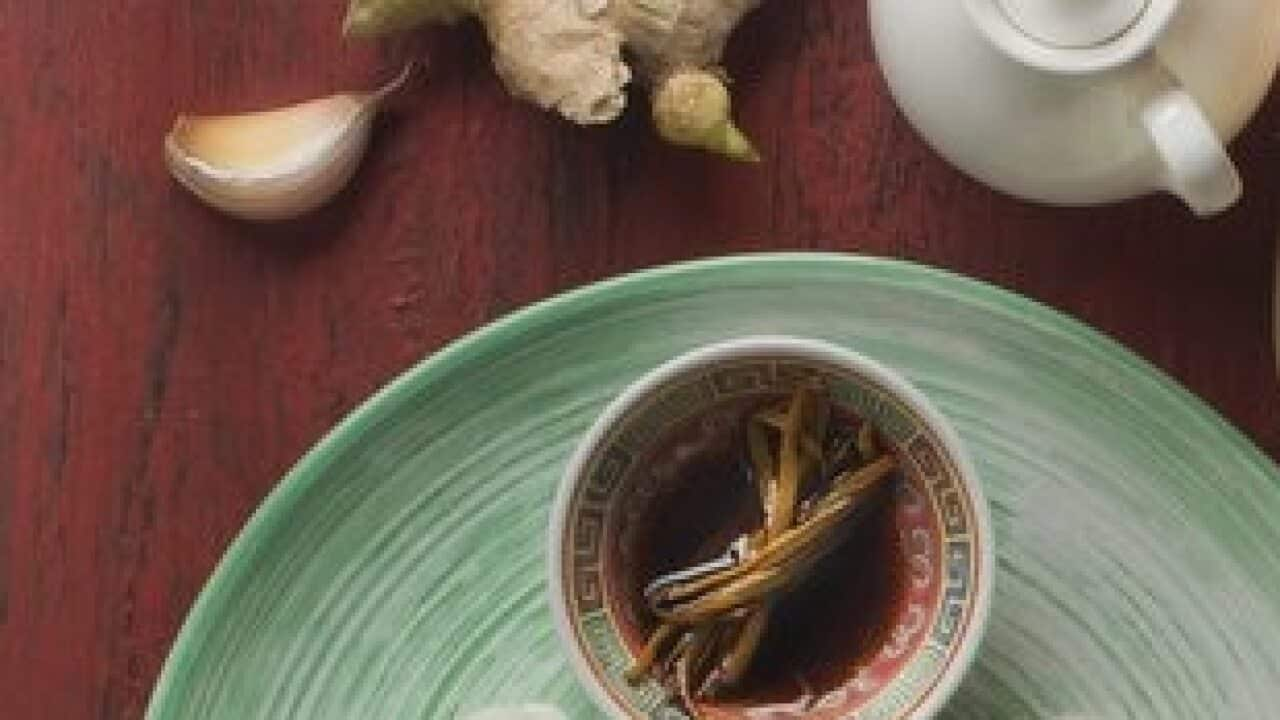My unusual school lunches growing up in the 80’s were an extension of the general rejection of being a strange wog.
The school bell would ring, and it was a mad dash to see if the smell of my mother’s stuffed cabbage rolls had permeated out of my school bag and throughout the locker room. Thankfully, they were found sitting idle in a cryovac-like container, within multiple plastic bags and secured meticulously by a single white twist tie.
For a recipe on how to cook cabbage rolls, go to

Slavica (centre in blue) arrives in Melbourne, Australia in 1979. Source: Supplied
My mother’s twist tie technique ensured that any unorthodox smell was well preserved, at least until the inevitable ‘breaking of the seal’. This was always met with great trepidation as her cabbage rolls could pack a punch on the uninitiated senses.
When classmates would make fun of my food, I took it personally. They would say “why are you eating that ugly, smelly thing? That’s yuck!” I remember being slightly ashamed.
I didn’t want to bring 'wog food' to school for lunch. I wanted triangles of buttered white bread with vegemite or a sausage roll with tomato sauce instead, just to fit in.
Mum came to Australia in the late 70's from Serbia, with very few belongings, no grasp of English, and a family left behind. With a collection of tried and tested recipes that paid homage to her homeland, the self-taught cook took great comfort and joy in feeding others.

Slavica preparing stuffed capsicums/peppers in the 1990's. Source: Supplied
Money was tight and a whole cabbage could go a long way. Cabbage rolls, sauerkraut, salad, no part of the cabbage was spared.
The humble cabbage roll was a staple dish in my family’s home. Cabbage leaves were given the upmost respect. When red capsicums were on special, I was treated to a cabbage roll variation. It was nutritional business on the inside and party on the outside. Yummy and still completely wog. To this day, the capsicum version is my favourite.
My school lunches were dictated by what we had for dinner the night before. Portion control was never my mother’s strong suit. She cooked in abundance which made for multiple meals, including school lunches.
She always had a fear that a single cabbage roll would leave me hungry and always packed two or more. Her rationale was that one cabbage roll may roll around in the container and unravel all of its content. Two or more would ensure this would less likely occur.
On weekends, when my friends would come over to our house to play, they were met with a dinner sized plate of food with exotic shapes, textures and smells. It was customary to offer guests food and beverages shortly after arrival. I quickly realised this was not the norm when they conceded defeat a quarter of the way in their meal.
With my titanium-lined belly, I was successfully able to polish off a whole plate of food, with ease. This was standard operating procedure at every meal as no leftovers were allowed.
I used to wonder what the food I ate everyday could tell me about my culture. Cooking traditional food was a way of preserving my mother’s culture when she moved to Australia. Continuing to make food from her culture was a symbol of pride in her ethnicity and means of coping with homesickness. In those days, communication was limited to mail, airmail that is, and it would often be months between letters. In later years, my mother never adopted social media as a means of sharing her culinary conquests. The kitchen was her sanctuary and a haven away from an Anglo-orientated; increasingly digital world. She was always baking, basting, roasting, stirring, blitzing and mixing. I remember the humming sound of the range hood with Bessemer pots and pans sprawled across the stovetop. On special occasions she would be up late the night before, trying out new recipes to dazzle her guests.
In later years, my mother never adopted social media as a means of sharing her culinary conquests. The kitchen was her sanctuary and a haven away from an Anglo-orientated; increasingly digital world. She was always baking, basting, roasting, stirring, blitzing and mixing. I remember the humming sound of the range hood with Bessemer pots and pans sprawled across the stovetop. On special occasions she would be up late the night before, trying out new recipes to dazzle her guests.

Jelena and Slavica. Source: Supplied
Food for my family has become the centre for everything. Every dinner, birthday, Christmas and picnic, was a feast for the ages. There were plates of cold meats, mortadella, platters of cooked meat (pork was typical), and to round out the dining experience, a sugar hit with a selection of no less than five desserts. In between there were potatoes, cabbage and tomato salads, more meat, along with Vienna sliced bread and sometimes pita bread. In 2019, my mother lost her battle with breast cancer.
In 2019, my mother lost her battle with breast cancer.

Slavica. Source: Supplied
I remember the food my mother cooked, and it has become a great source of nostalgia for me – in a way allowing me to embrace the immigrant side of my identity.
Arriving in Australia with a notebook of scribbled recipes, and with absolutely no intention of falling into whatever the natives of the new land ate, she taught me how to be comfortable with our culture and how to eat.
Jelena is a freelance word wrangler who has a passion for developing engaging content. She is a first-time published writer who has been crafting the written word for decades. When she is not writing, Jelena is an armchair traveller, yogi and punster.
This story was originally entered in the 2020 and forms part of a special SBS Voices and SBS Food collaboration series: 'Food of My Childhood'.








